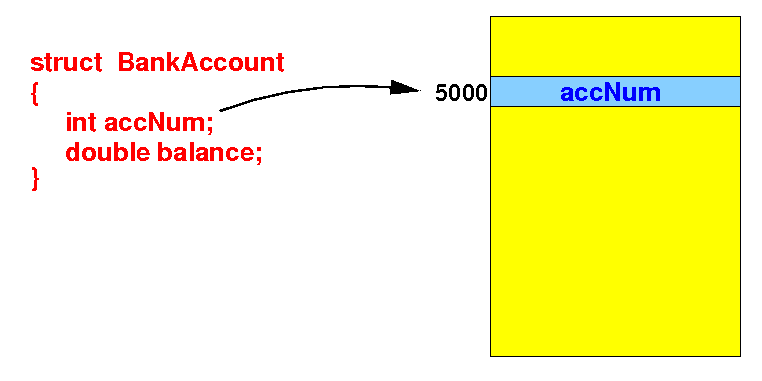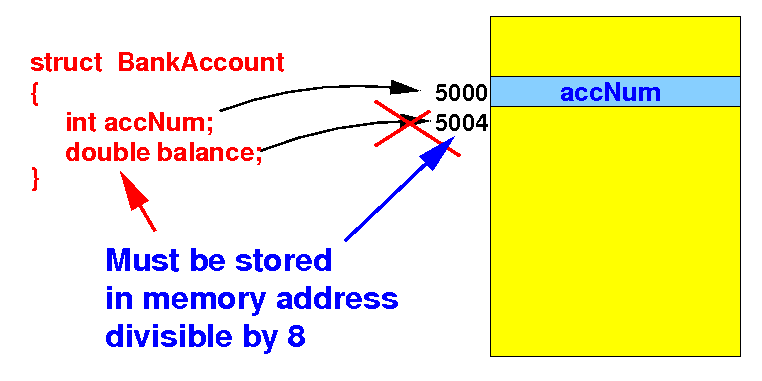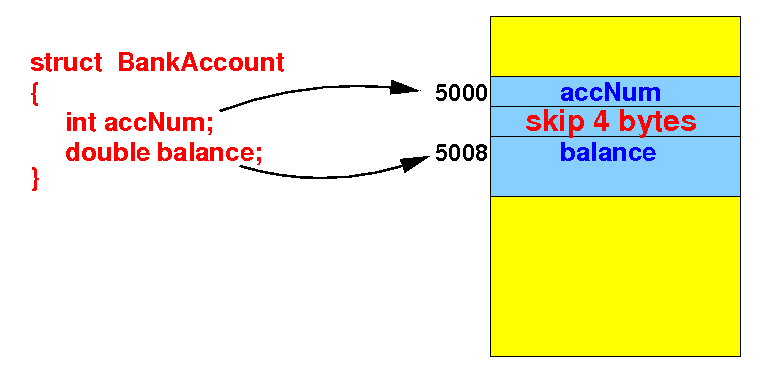Review:
C's struct
and
Java's object
- The
struct
definition
in C is
similar to
a
class definition
in Java:
|
C's struct
|
Java's class
|
struct BankAccount
{
int ID;
float balance;
} ;
|
public class BankAccount
{
public int ID;
public float balance;
public void deposit(double x)
{
balance += x;
}
}
|
- Differences:
-
No access protection
of member fields in
a C's struct
- A struct
does
not
contain any
(member) function definitions
|
|
- The
sizeof
operator
can be used with a
user-defined
data type (=
struct)
to find out
how many bytes
of memory space
the
struct variable will need.
- Example:
struct BankAccount // I define struct here for brevity
{
int accNum; // 4 bytes
double balance; // 8 bytes ---> total = 12 bytes
};
int main(int argc, char *argv[])
{
printf("sizeof(struct BankAccount) = %d\n",
sizeof(struct BankAccount) ); // 16 bytes
}
|
Notice:
- The total memory
needed is
not equal to
the sum of
the number of bytes
in the variable !!
|
|
DEMO:
demo/C/set2/sizeof1.c ---
can you explain the
gap between
accNum and
balance ?
()
Why is there a
gap
between
member variables in a
struct (object)
- Due to the
way the
computer memory is
constructed:
- There are memory address
alignment requirements to
make the memory operations
more efficient
|
- The
memory alignment
requirments:
- A
double
typed variable
must be located at a
memory address that
is
divisible by 8
- An
int
typed variable
or a
float
typed variable
must be located at a
memory address that
is
divisible by 4
- A
short
typed variable
must be located at a
memory address that
is
divisible by 2
|
|
Why is there a
gap
between
member variables in a
struct (object)
- Member variables in a
struct typed variable
are stored
sequentially in
memory
-
Suppose the
C compiler
stores
the member variable
accNum at
address 5000:

|
Why is there a
gap
between
member variables in a
struct (object)
Why is there a
gap
between
member variables in a
struct (object)
❮
❯


